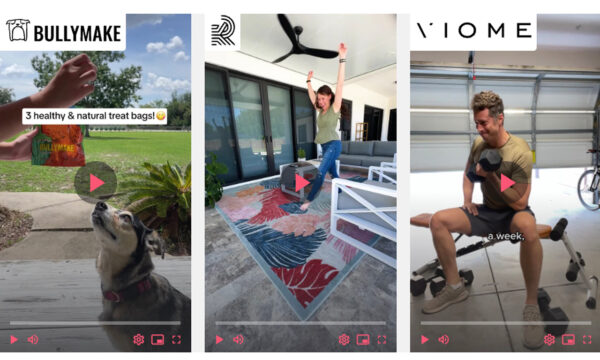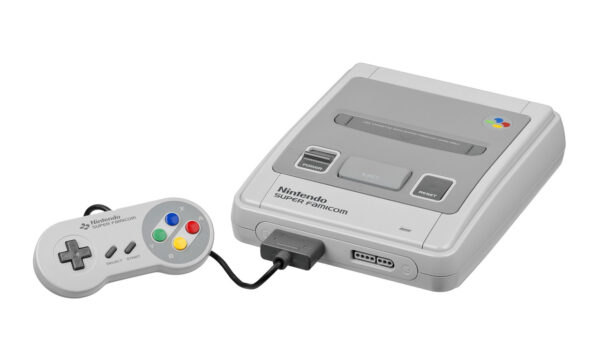Is all media starting to be designed for smartphone users first

The emergence of smartphones has been a technological phenomenon over the last 20 years. The industry itself has seen evolution that has scarcely been believable given the pace at which technology has driven it. But thanks to smartphones, many other industries have been forced to adapt as people’s behaviour has changed.
The media industry has fought to keep up with this pace as news sources, social media, video streaming, and online gaming are now accessed primarily on mobile devices. If you think this behaviour is confined to the UK, Europe, or the US, then think again, as there are almost 5 billion people across the globe now using smartphones1.
As smartphones have become the first port of call for a massive number of people when it comes to a never-ending rise of everyday tasks, it’s clear that many companies fighting for space in the online world have been forced to prioritise mobile-friendly experiences. But could it be said that all media is now designed with smartphone users first?
How media consumption has changed
2024 finally saw more people access their news online than rely on television in the UK2. But that’s now down to people accessing their news on desktop computers, that change has come due to the proliferation of mobile devices. Over 90% of internet users now access the internet using a mobile phone3, meaning that they have to be catered to in a way that’s easy to use and understand. People who might not be technologically savvy when it comes to other devices are using smartphones regularly. If basic functions were too hard to access or navigate, that amount of penetration just wouldn’t be possible.
One of the most noticeable changes in the way media is consumed is the increasing prevalence of short-form content. TikTok is the latest social media platform that has popularised quick, engaging content that can be viewed seamlessly on a mobile device.
The rise of streaming services can be attributed in part to the use of mobile devices, as people can now access their favourite shows on the move. These services can now optimise video quality based on internet speeds meaning that even those watching on their commute on mobile networks can have a smooth and enjoyable viewing experience. There has even been a rise in vertical video formats, designed for the natural way most people hold their phones.
Impacts on website & app design
The smartphone revolution has influenced how websites and apps are designed. Responsive design principles are now adopted by most companies ensuring that content will adapt seamlessly to different screen sizes. Readability, navigation, and fast-loading content are prioritised to ensure mobile users get the best user experience possible. This has also made life easier for those accessing sites using computers rather than mobile devices, thanks to the two principles of mobile design that tie the two worlds together.
Mobile design is based on two key tenets: progressive advancement and graceful degradation4. Progressive advancement puts design on the smallest screen, most likely a smartphone, first and scales up from there. The core functions of the app or site are prioritised even as the design begins to be scaled up for desktops. Gradual degradation works the other way around. The biggest screen size is designed first, and then features can be adapted in a controlled way to best fit a smartphone.
E-commerce platforms, which make up a huge amount of online traffic, have even optimised their sites for one-handed use. Meaning users can hold their phones in their usual way while they shop making it a more natural experience and one that is likely to lead to repeat business.
Google, for so long the arbiter of what sites are seen thanks to its all-pervasive presence as a search engine, has also put mobile-first design at the centre of its results. Google stopped crawling websites that do not work on mobile devices in July 2024, and the company’s algorithm benefits sites that are optimised for the mobile experience. Businesses now simply have to ensure their websites are optimised for smartphone users to remain competitive. Those that don’t are surely doomed to fail.
Social media
The rise of social media has gone hand-in-hand with the drive to smartphones. Leading social media apps, such as Instagram and TikTok, were all designed with mobile users in mind as companies made the shift away from websites to dedicated apps that could be downloaded straight to your device.
Push notifications allow these apps to interact with users throughout the day encouraging more use and engagement than could ever be gotten from traditional media means.
Advertisers never like to be left behind and they too have adapted their content to a mobile-first environment through the use of social media. Entire ad campaigns are now designed for use on social media apps, including interactive elements such as carousel ads or polls, making the user engage with the ad rather than passively scrolling past it.
Journalism & news media
Social media might have driven the rise in short-form video clips and how people interact with content, but other industries have had to adapt as a result. With news now being primarily accessed on smartphones traditional news media has been forced to go searching for its audience in new ways.
Mobile-friendly formats have been at the forefront of a digital strategy incorporating live blogs, which update throughout the day just as a social media feed would. News aggregators such as Google News are part of this new landscape as well offering bite-size chunks of news with concise headlines and quick summaries that can be read entirely while scrolling.
The BBC has even jumped on the short-form video bandwagon with a selection of the biggest stories of the day presented in vertical video formats perfect for social media users.
Where traditional media might have been based on a newsreader telling viewers on the TV the biggest stories of the day, this move to mobile-first design has seen more visual storytelling take hold. Now, news outlets have to catch the eye with interesting footage or infographics to get the story across quickly and effectively. These are particularly useful with younger audiences who get the majority of their news from social media sites, but even the majority of adults in the UK now access their news in the same way5.
Gaming & interactive media
Gaming has long been a resilient industry, adapting to whatever space has been necessary, and that is no different when it comes to mobile-first design. Console and PC gaming are still popular, but mobile gaming has become an absolute monster. This has led to a wave of accessible, casual gaming titles that are perfect for gaming on the go.
Mobile gaming has come a long way from a blocky snake thanks to the graphics capabilities of modern smartphones, touch-screen controls, and cloud-based gaming which means players don’t have to take up precious memory downloading games but can access them online.
Thanks to the success of mobile gaming with industry-leading titles such as Fortnite and PUBG Mobile, which have attracted millions of players across the world, developers are now designing games specifically for smartphone play.
Even the streaming giant Netflix is looking to get into the gaming world through a mobile-first approach6. With over 300 million subscribers at the end of 2024, a foray into mobile gaming that can be accessed on smartphones through Netflix’s own app could give rise to an industry all of its own.
Furthermore, augmented reality (AR) and virtual reality (VR) technologies are becoming increasingly integrated into mobile gaming. Games like Pokémon GO have demonstrated the potential of AR, blending digital experiences with real-world environments in a way that is uniquely suited to smartphones.
The future of mobile-first media
In the future, it’s clear that mobile-first media will become more prevalent as technology keeps evolving. The next big landmark could be the increase in 5G networks across the world which promises to bring more people than ever more reliable and faster mobile internet.
This connectivity is going to be crucial as experiences become even more interactive, with the seamlessness of streaming or gameplay proving pivotal to its success.
Artificial intelligence is going to have a key role in shaping so many industries in the future and mobile-first media will be no different. Personalised content will become more personal and individual than ever, while news services will be able to deliver the stories you want all through analysing behaviour and patterns to decipher exactly what the user wants. But all of that will play out on a mobile phone ahead of any other technology.
Wrap up
The shift towards mobile-first media is undeniable, with smartphones becoming the primary gateway to news, entertainment, and social interaction. This transformation has influenced website and app design, journalism, social media, video streaming, and gaming, creating a media landscape that prioritises accessibility and convenience for mobile users.
As technology continues to advance, media companies must remain adaptable, ensuring that content remains engaging, accessible, and relevant in an increasingly mobile-centric world.
The editorial unit
- What’s trending on the App Store’s ‘Casino’ chart in 2025 and why? Written by Giuseppe Faraone, Published by Casinotopsonline
- Online overtakes TV as biggest source of news in UK for first time. Written by Charlotte Tobbitt. Published by pressgazette.co.uk
- Internet Traffic from Mobile Devices (Oct) 2024. Written by Josh Howarth. Published by explodingtopics.com
- A guide to mobile-first design: 5 best practices for designing for mobile. Written by Webflow team. Published by webflow.com
- The way people get their news is changing, Ofcom report shows. Published by news.sky.com
- Netflix taking mobile-first, ‘phased approach’ to game releases. Written by Justin Carter. Published by gamedeveloper.com

























Facebook
Twitter
Instagram
YouTube
RSS